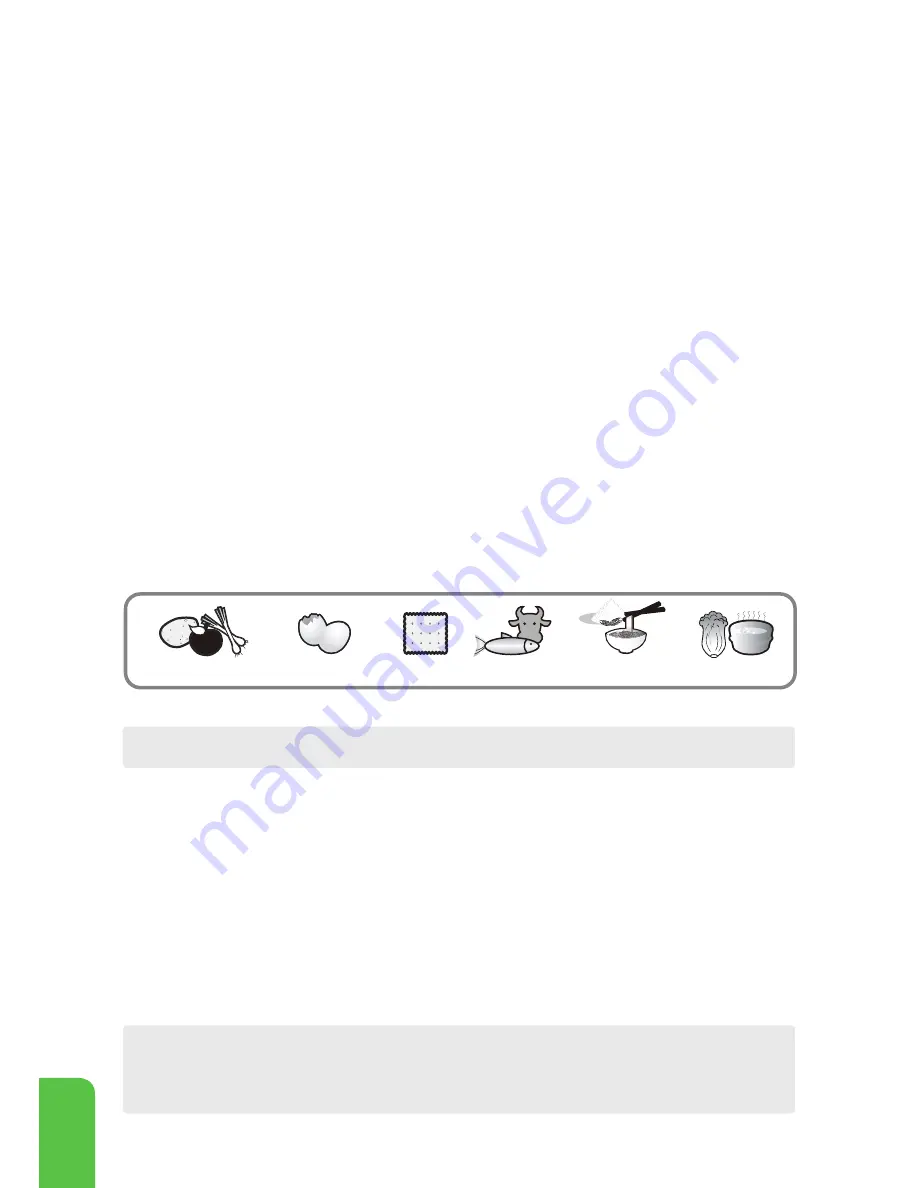
Fruits and Vegetables Egg shells, lobsters
Snacks
Meat and Fish
Noodles and Grains
Soups
8
Using Your Food Organics Composter
How To Use The Food Composter
• Ensure the unit is plugged in and switched on at the wall.
• Simply open the lid, pour the food in, and close the lid again. You can do this whenever and as often
as you wish. You do not need to wait for food to finish composting before topping up.
• Once the lid is closed, the unit will automatically continue operation. Over time, the paddles
will rotate, the unit will heat up, and the fan will operate automatically to help accelerate the
composting process. The unit may emit steam during this time when the lid is opened.
What You Should NOT Compost
Avoid placing hard food items in the composter
such as:
• Large bones
• Oyster or scallop shells
Do not compost:
• Waste Cooking Oils
• Waste Cooking Fats
Also, you should not compost non-food
material, even if it is biodegradable, such as:
• Medicines
• Wood (eg chopsticks, matches),
• Paper or cigarettes
• Cloth
To obtain optimum results chop up larger pieces of food to allow the food to compost more quickly.
Important: Never add more than 4kg of food waste per day.
Do not allow compost to collect above the ‘maximum’ line – this is the top of the steel part of the
unit’s tank. Refer to page 10 for more detail.
What You Can Compost
Basically you can compost anything that you can eat, cooked or raw, including:
• Liquid foods, such as soup and stew
• Meat and fish
• Small bones such as fish and chicken bones
• Fruit and vegetables
• Egg shells and most seafood shells such as lobster and mussel shells
• Bread, crackers, grain foods
• Fast foods
• Dairy foods
Содержание CLOey
Страница 16: ...cl clo2 0614...



























